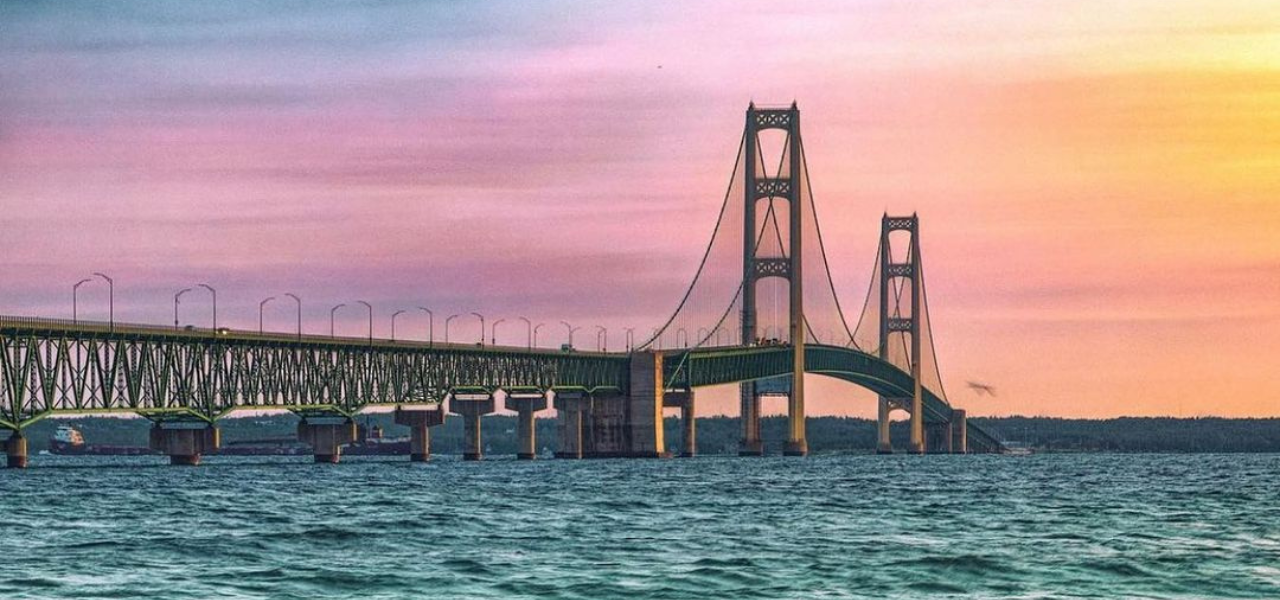Exploring Michigan's rich tapestry of architectural marvels is a must for any travel enthusiast, and the state's iconic bridges are no exception. From the engineering prowess of the Mackinac Bridge connecting Michigan's peninsulas to the charming covered bridges like Zehnder’s Holz Brücke in Frankenmuth, each structure offers a unique glimpse into the state's history and beauty. Whether you're living in Michigan or moving to Michigan, these bridges—from the bustling Ambassador Bridge facilitating international trade to the serene pedestrian paths of the Little Mac Bridge—provide not only crucial transportation links but also scenic views and cultural experiences. Discovering these 14 iconic Michigan bridges is essential for your travel bucket list, showcasing the state's diverse landscapes and engineering feats.
 michiganders, instagram
michiganders, instagram
Mackinac Bridge
Mackinaw City to St. Ignace, MI
Website Mackinac Bridge
The Mackinac Bridge, affectionately known as the Mighty Mac, stands as Michigan's most iconic and largest bridge, stretching nearly five miles to connect the state's Upper and Lower Peninsulas. Since its opening on November 1, 1957, this marvel of 20th-century engineering has become a beloved symbol for both residents and visitors, easing the once arduous journey that required long ferry rides across the Straits of Mackinac. The bridge is not only a vital transportation link but also a cultural landmark, hosting the annual Labor Day Bridge Walk where participants can experience the breathtaking views and grandeur of the structure firsthand. This event is a cherished tradition, offering a humbling yet exhilarating way to appreciate the sheer scale and beauty of the Mighty Mac.
Blue Water Bridge
Port Huron, MI to Port Edward, ON, Canada
Website: Blue Water Bridge
The Blue Water Bridge majestically spans the St. Clair River, linking Port Huron, Michigan with Port Edward, Ontario, Canada. Conceived by the Michigan Legislature in 1935, the bridge was brought to life by lead engineer Ralph Modjeski, celebrated as “America’s greatest bridge builder.” Overcoming various construction challenges, Modjeski opted for a cantilevered-through-truss design to meet the stringent vertical clearance requirements for shipping. Upon its grand opening in 1938, the bridge featured two vehicle lanes and pedestrian sidewalks. However, the 1980s saw the removal of these sidewalks to accommodate a third vehicle lane due to rising traffic demands. By the early 1990s, the need for a second span became apparent, and a continuous-tied arch design was chosen, adding a modern complement to the historical structure without overshadowing its legacy.

.33.png)